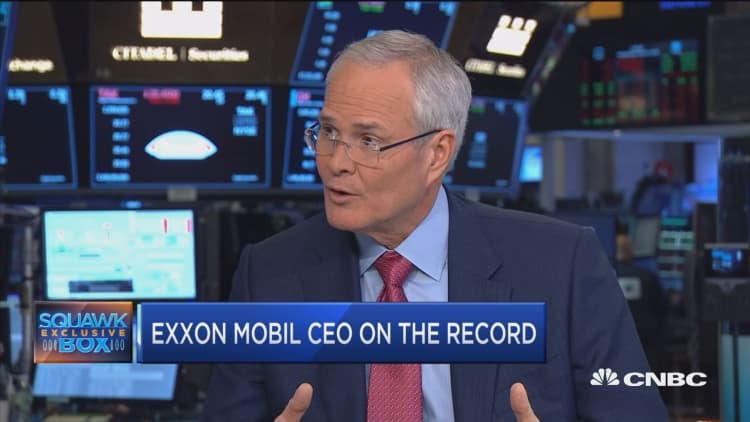Oil prices fell on Friday, but managed to retrace losses after plunging on data that showed recent U.S. job gains grinding to a halt in February.
Crude futures were also under pressure after data showed a slump in Chinese imports and exports last month and the European Central Bank slashed its outlook for economic growth on the continent.
U.S. West Texas Intermediate crude futures fell 66 cents, or 1.2 percent, to $56 around 2:30 p.m. ET. WTI earlier fell more than 3 percent to a three-week low at $54.52. The contract is on pace to rise half a percent this week.
Brent crude futures were down 54 cents, or nearly 1 percent, to $65.76 a barrel, bouncing from a three-week low at $64.02. The international benchmark for oil prices was on pace for a roughly 1 percent gain on the week.
Crude futures extended losses in early morning trade after U.S. government data showed the country added just 20,000 jobs in February, compared with estimates for a gain of 180,000 positions.
Also in February, China's exports fell nearly 21 percent and its imports slipped about 5 percent, data released Friday showed. The trade figures raise fresh concerns about the world's second largest economy.
Despite the headline figures, Chinese crude oil imports surged 21.6 percent to 10.23 million barrels per day, the third-highest volume on record, according to Reuters analysis.
On Thursday, crude futures came under pressure after Europe's central bank slashed its growth estimate to 1.1 percent, down from its last forecast for 1.7 percent expansion. ECB President Mario Draghi said the European economy was in "a period of continued weakness and pervasive uncertainty."

The oil market has also struggled to post gains this week in the face of strong U.S. production and a buildup in the nation's crude stockpiles.
American drillers are pumping at records near 12 million bpd, according to preliminary weekly data. Meanwhile, U.S. crude stockpiles surged by 7.1 million barrels in the week through March 1, the Energy Information Administration reported.
The number of oil rigs operating in U.S. fields fell for a third straight week, oilfield services firm Barker Hughes reported on Friday. The firm's closely watched oil rig count fell by nine during the latest week.
Investment bank Jefferies on Friday said that U.S. output growth was largely being fueled by onshore shale production, which had recently benefited from investments by oil majors like Exxon Mobil and Chevron.
"The majors bring scale, steady capital investment and science to the play," the U.S. bank said, adding that this could lead to a higher growth trajectory and cap the upside oil prices.

Rising U.S. output is offsetting efforts by major oil producers to drain oversupply from the market.
OPEC and its allies including Russia are trying to remove 1.2 million bpd from the market during the first six months of the year, following a collapse in crude prices in the final months of 2018.
The supply curbs have helped to boost oil prices by 19-20 percent this year. U.S. sanctions on Iran and Venezuela's state oil firm PDVSA have also tightened global supplies.
— Reuters contributed to this report.



